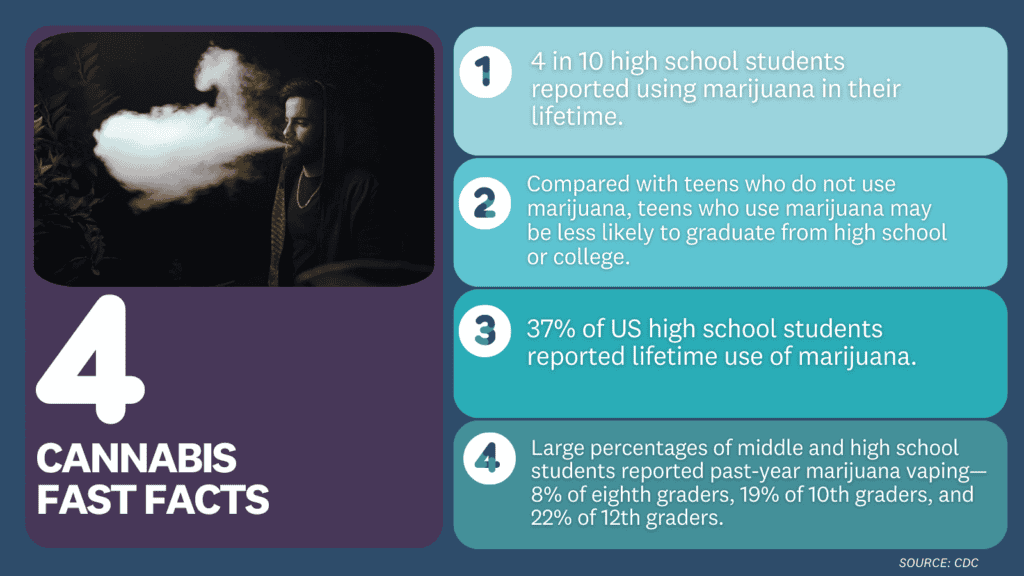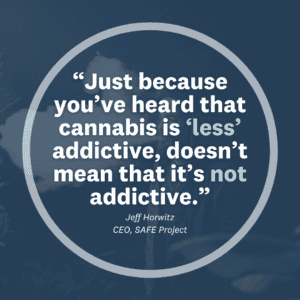One of the more confusing and, perhaps, controversial issues for many Americans is both the legalization and widespread use of cannabis. We all know less about cannabis than we think we do: whether it’s an issue of legality, potency, or just knowing what the line is between therapeutic use, recreational use, and when cannabis use actually becomes a disorder.

What’s the Difference Between Cannabis and Marijuana?
Cannabis, or marijuana, is said to have over a thousand street names including weed, grass, pot, skunk, or trees. In fact, commercial growers have added over two thousand brand names for different strains. For consistency, we will simply refer to Cannabis throughout this article.
Cannabis: This plant has three species: Cannabis sativa; Cannabis indica and Cannabis ruderalis. The cannabis plant contains about 540 chemical substances and more than 100 compounds known as cannabinoids – including THC and CBD.
Cannabinoids: These compounds include tetrahydrocannabinol (THC), which is impairing or mind-altering, as well as other active compounds, such as cannabidiol (CBD). Unlike THC, CBD is not impairing or mind-altering, nor does it cause a “high” or impairment. There are far higher levels of THC than many people were accustomed to in previous decades, with some estimates putting it at three times higher than it was 25 years ago. In short: the higher the potency, the higher the possibility of developing a disorder.
Marijuana: dried leaves, flowers, stems, and seeds from the Cannabis sativa or Cannabis indica plant.
Please note: Synthetic Cannabinoids (aka Synthetic Marijuana, Fake Weed, Spice, K2) are not derived from the Cannabis plant. They are human-made chemicals that are either sprayed on dried, shredded plants. You can read more about synthetic cannabinoid issues with toxicity and safety on the CDC website.)
What’s the Difference Between Therapeutic and Recreational Cannabis?
Medical marijuana, recreational cannabis, and CBD products are easier to obtain than ever. It’s also easier than ever to be totally confused about what all these different products do, and how they are used therapeutically or recreationally.
Keep in mind that under federal law, marijuana is still a “Schedule 1” illegal substance. That means Schedule 1 drugs, substances, or chemicals are considered to have no currently accepted medical use and a high potential for “abuse.” That puts cannabis (marijuana) in the same class as heroin, LSD, meth, and peyote.
- Therapeutic Use: Therapeutic use has been legalized in 36 U.S. states and Washington, DC, and must be prescribed by health care providers. It can be prescribed in multiple forms: oils for vaporizing, pills, lotions, dried leaves/buds, or oral solutions. It has been used to relieve the symptoms of a medical condition, including:
-
- Cancer Treatment Side Effects: can improve side effects including nausea, sleep, neuropathy, and appetite
- PTSD (Post Traumatic Stress Disorder)
- Severe or chronic pain
- Amyotrophic lateral sclerosis (ALS)
- Multiple Sclerosis (MS)
- Epilepsy and seizures
- Palliative care
- Alzheimer’s disease
- HIV/AIDS
- Crohn’s disease
- Glaucoma
- Recreational Use:
-
- While there is no specific definition, recreational use generally refers to a substance used without medical justification for its psychoactive or intoxicating effects. With cannabis, recreational use is often compared to alcohol or tobacco consumption.
- It is often based on the belief that occasional use of a substance (like cannabis, tobacco, or alcohol) is neither habit-forming nor addictive.
- Recreational use can occur individually and in a social setting.
Status: Recreational use has been approved in 24 states and Washington, DC.
When Does Cannabis Use Become a Disorder?

In fact, every type of substance use disorder falls under those very same patterns — whether it’s cannabis, prescription drugs, alcohol, stimulants, or other substances. Just because you’ve heard that cannabis is “less” addictive, doesn’t mean that it’s not addictive.
So what does that disorder look like? Whether you are concerned about your use or that of a loved one, here are some examples of when it’s time to be concerned about a possible disorder:
Am I At Risk For Cannabis Use Disorder?
- Do you use cannabis for a longer period of time than you intended?
- Do you use it in larger amounts than you intended?
- Has your use affected your relationships or responsibilities? For example, are you having difficulty with home, work, or school because of repeated use?
- Have you experienced difficulty paying bills in order to buy cannabis? (This can include delaying bill payment, borrowing money, maxing out credit cards, or tapping out savings accounts.)
- Has a family member, friend, colleague, or supervisor expressed concern because of your use?
- Have you given up social or recreational activities because of cannabis use?
- Have you tried to reduce your use, but had difficulty stopping?
- Do you want to cut down on your use?
Where Can I Find Help or More Information About Cannabis Use Disorder?
